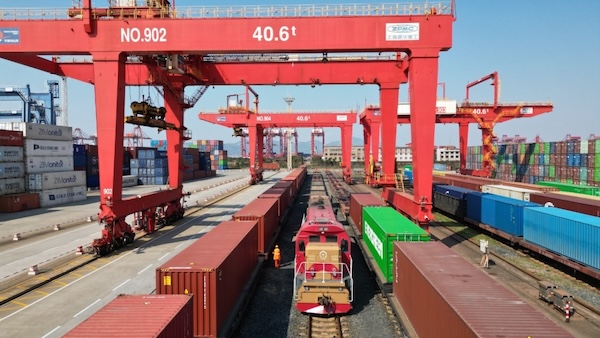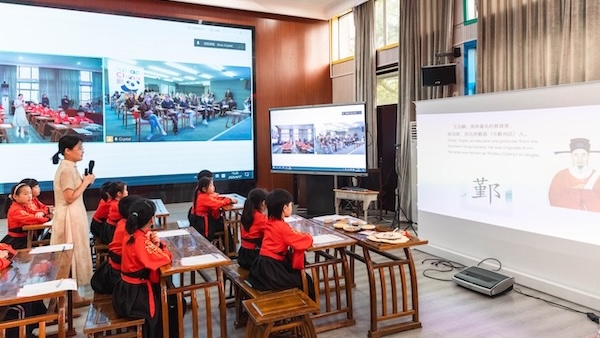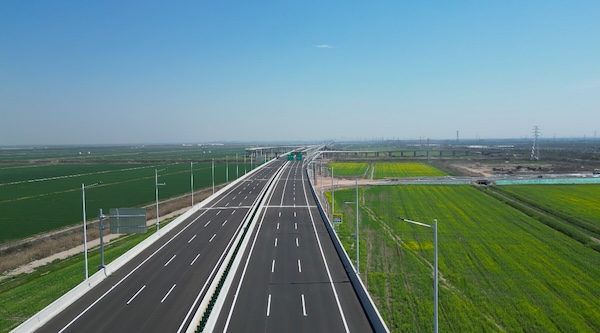Villagers Enabled: China's Rural Revitalization in Two Polish Doctors' Eyes
Respecting What Villages Are Endowed with Naturally
At the outset of this sharing session, the Polish couple told their story with Gejia village.
Magdalena and her husband Artur often participate in activities organized by Ningbo Red Peony Painting and Calligraphy International Exchange Association. Jiang Hongsheng, the founder of the association, had accompanied them to several villages in Ningbo before the couple's visit to Gejia Village. Well-off villagers and contiguous villas there left Magdalena and Artur such an impression that considerable input was indispensable for a beautiful village.
However, in this year, a trip on September 4th changed their understanding.
On that day, they went with Jiang Hongsheng to visit Gejia Village. It nestled tranquilly at the foot of a hill, where buildings, old and new, were blended together and roads zigzagged. As they walked, every step through the village offered them inviting yet different sights: flowers blossoming in an old pig trough, paintings on cobblestones, and bamboo wind chimes hanging on timeworn canes. These ornaments made out of local materials were distinctive, matching the tone of the engrossing village.
What surprised the couple most was the green approach that villagers displayed in utilizing local conditions. In exploring its origins, they heard three frequently-said words: "artist-in-residence", "Cong Zhiqiang" and "utilization of locally available resources". Magdalena and Artur learned that behind Gejia Village's remarkable transformation, there existed a perplexing phenomena, and persistent support from a policy and a person.
Early in 2018, the Central Rural Work Conference issued a mobilization order to implement the strategy of rural revitalization. Ninghai County of Zhejiang Province redoubled its efforts in New Countryside construction with large investment but a phenomenon ensued that villagers provided little assistance for the government, leading to low fund utilization rate and lack of enthusiasm.
To address the problem, Ninghai County introduced a program named "artist-in-residence" in the spring of 2019, inviting artists home and abroad to offer guidance on design for the villagers. Cong Zhiqiang, an associate professor at School of Arts in Renmin University of China came to Ninghai County and had his eyes on Gejia Village, which, as a matter of fact was not endowed with favorable natural resources — but it could better extend the experience he explored here to other rural areas in China.
On April 5th in 2019, Mr. Cong came to the village with three postgraduates. Seeing stones lying everywhere and moso bamboos growing in abundance, Prof. Cong and his three students designed a bench made of rocks and bamboos and asked several senior villagers to turn their idea into reality according to the design.
Renda ( Renming University of China) Bench, as it is called, is welcomed by local people. Villagers began to make it as the design was neither too sophisticated nor too costly. Under the guidance of Cong's team, villagers had built over 40 sharing spaces in Gejia Village and created more than 300 pieces of artwork, including an art gallery and a handicraft workshop, during which most of the materials utilized were obtained locally and only over 600,000 RMB yuan were spent.
The story of Cong contrasted sharply with the past efforts of Gejia Village. Although the village had tried to beautify itself and spent more than 100,000 RMB yuan on the design, the result was still unsatisfactory.
Knowing the success of Gejia Village, Magdalena and Artur gained a brand-new understanding of China's rural revitalization, which features the encouragement of villagers to use local resources and thus transform their village economically.
"Our home is our corner of the world. It is our first universe, a real cosmos in every sense of the world", Magdalena quoted the words of French philosopher Gaston Bachelard to illustrate the great significance of utilization of local resources: people have an intimate relationship with their birthplace, and the villagers transform abstract love and friendship into visible objects with locally available materials according to the natural endowment of the village. Their perception of home is embodied in each landscape, and it is exactly why such landscapes are consistent with the temperament of the entire village.

 Ningbo seabird project seeks international volunteers
Ningbo seabird project seeks international volunteers 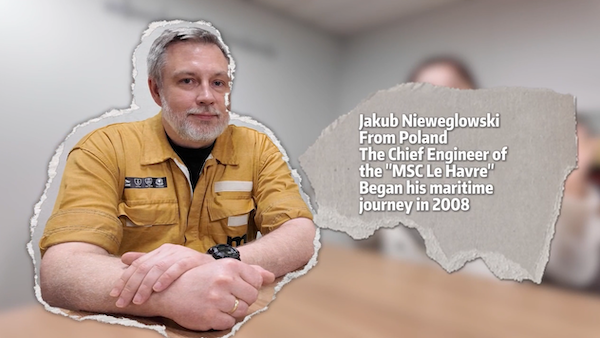 Jakub's journey: From shipyard to sea
Jakub's journey: From shipyard to sea 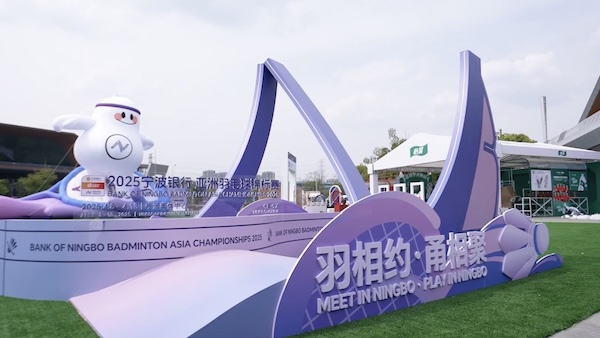 Badminton Asia COO applauds Ningbo
Badminton Asia COO applauds Ningbo 